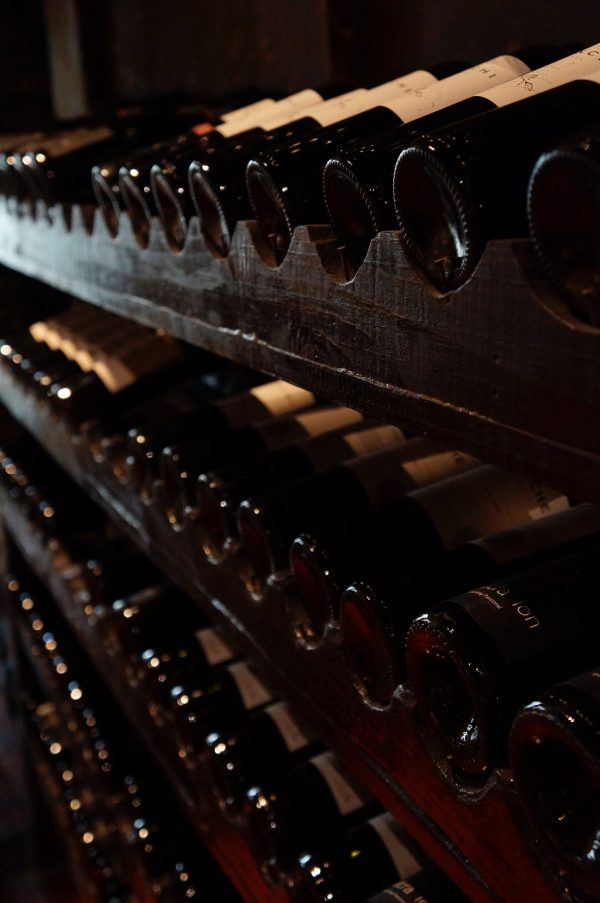We all love to celebrate with a glass of bubbly! But how does the fizz get into the bottle?

Two glasses next to open champagne bottle (image courtesy of Sergio Souza)
La Méthode Champenoise
This is the traditional way of producing sparkling wines: effervescence is produced by a secondary fermentation in the bottle.
Terminology
Although it takes its name from the Champagne region of France, where it has been used since the late seventeenth century, this method of fermentation in the bottle was developed in Limoux in 1531, to produce its famous Blanquette de Limoux.
In 1994, producers in the Champagne region successfully lobbied the EU to restrict the use of the term to wines produced in their area alone; other French regions must now call their process la méthode traditionelle, while other EU countries have adopted their own terms – cava, prosecco, sekt, etc.
Process
After the primary fermentation, blending – assemblage in Champagne – & bottling, a second fermentation is made to occur in the bottle.
The blended wine is bottled, then yeast and a small amount of sugar, known as the liqueur de tirage is added. Naturally these quantities are controlled by the EU! The bottles are then sealed with a temporary plug and stored horizontally in the cave.
Under the Appellation d’Origine Contrôlée (AOC) rules, a non-vintage Champagne must age for 15 months; if the harvest has been exceptional, a vintage is declared & the wine must mature for at least three years.
After aging, the lees must be removed: this process of remuage means the bottles are placed in special racks (pupitres) which hold them cap down, at a 45° angle. Each day, each bottle is slightly shaken then turned & replaced, at a slightly steeper angle. This daily agitation causes the sediment to travel very gently down towards the neck of the bottle.

Cellar with Wine Bottle (image courtesy of Bruno Cantuaria)
It’s a labour-intensive process, which is still done by hand for the prestige cuvées : lesser brands use a mechanised device known as a gyropalette.
When the sediment has completely fallen on to the temporary cap in the neck of the bottle, it is removed in the skilled dégorgement procedure, which was invented by Madame Cliquot in 1816: before that time, champagne was normally cloudy. Nowadays, the sediment and its surrounding liquid are frozen, and removed quite easily.
Balancing The Taste
The level then has to be restored by the practice of dosage, adding a little liqueur d’expédition, usually a mixture of the base wine plus sugar, although some of the maisons de Champagne claim to have secret recipes for this, adding a variety of ingredients.
The amount of sugar in the liqueur d’expédition is intended to balance the high acidity of the Champagne rather than affecting its taste, the original sugar having been consumed in the second fermentation. However it also changes the sweetness of the product: the levels are doux (sweet) then, in increasing dryness, demi-sec, sec, extra sec, brut, extra brut and brut nature/brut zero/ultra brut, the last having no added sugar and being extremely dry).
The cork is then inserted, with a capsule and muselet (wire cage) securing it in place.
To open the bottle, carefully remove the wire then gently twist the bottle, not the cork: this illustration is fun, but wasteful!

Man holding an open bottle of champagne (image courtesy of Viktoria Slowikowska)
Hold the glass at a 45-degree angle and pour the wine slowly down the side.
For parties, when serving several glasses at the same time, pour a little into each glass beforehand – then it’s easy to top them up at the last minute without the fizz spilling over.
All that’s left to do is to enjoy it!
(Image credits)
https://www.pexels.com/photo/open-champagne-bottle-near-two-cocktail-glasses-1841506/
https://www.pexels.com/photo/cellar-with-wine-bottles-774455/
